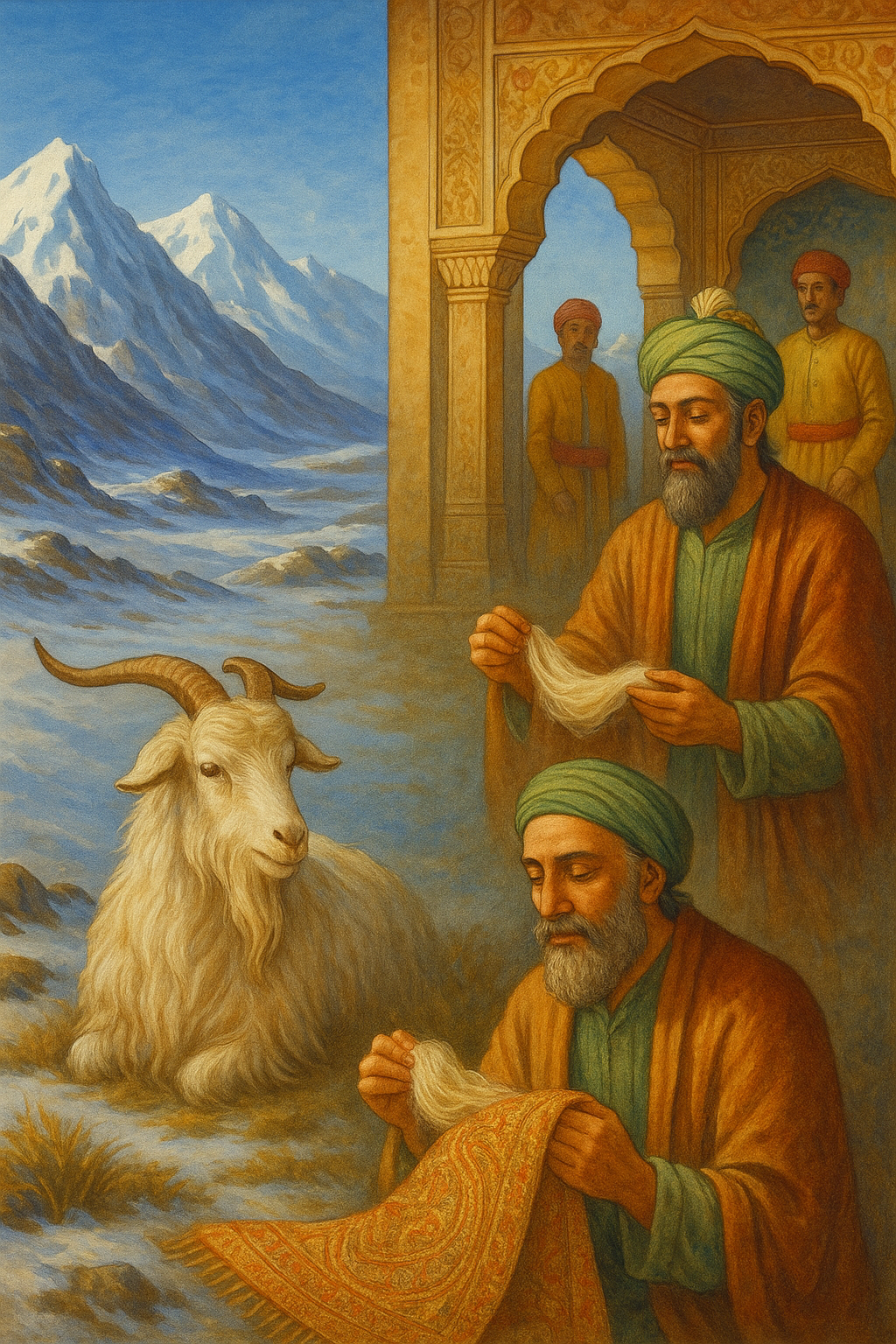The Story of Authentic Pashmina
Discover the rich heritage, traditional craftsmanship, and cultural significance of the world's finest natural fiber - authentic Kashmiri Pashmina.
History & Origin of Pashmina
The story of Pashmina begins over 1,000 years ago in the remote highlands of Ladakh, where Changthangi goats roam at altitudes exceeding 14,000 feet. These remarkable animals developed an incredibly fine undercoat to survive the harsh Himalayan winters.
Legend tells of a 15th-century saint, Mir Sayyid Ali Hamdani, who discovered this precious fiber and introduced it to the Kashmir Valley. The Mughal emperors, particularly Akbar, were so enchanted by Pashmina's softness that they declared it "pashm-i-na" - meaning "gold of fiber."
For centuries, Pashmina shawls were symbols of royalty and nobility, worn by emperors and gifted to dignitaries. The craft flourished under royal patronage, with master weavers developing techniques that remain unchanged to this day.

Geography of Authentic Pashmina
True Pashmina can only be found in the specific geographic regions of Ladakh and Kashmir
The Changthangi plateau in Ladakh, at altitudes of 14,000+ feet, is the exclusive home of the Changthangi goats that produce authentic Pashmina fiber.
Kashmiri Pashmina holds a Geographical Indication (GI) tag, legally protecting its authenticity and traditional production methods.
Only the Changthangi goats, adapted to extreme cold, produce the ultra-fine undercoat that becomes authentic Pashmina.
Traditional Craftsmanship
The art of Pashmina weaving involves multiple generations of skilled artisans
Weaving Techniques
Hand Spinning
Raw Pashmina fiber is hand-spun on traditional spinning wheels called "yinder"
Traditional Looms
Master weavers use handlooms that have remained unchanged for centuries
Time-Intensive Process
A single shawl can take 180-200 hours of skilled craftsmanship

Delicate needle embroidery using silk threads to create intricate floral patterns, requiring exceptional skill and patience.
Metallic thread embroidery that adds golden or silver accents, creating luxurious pieces fit for royalty.
Complex technique using wooden spools to create elaborate patterns, with some shawls taking years to complete.
Sustainable & Ethical Pashmina
Our commitment to ethical sourcing and supporting traditional artisan communities
We work directly with herders who practice sustainable goat rearing, ensuring animal welfare and environmental protection.
Fair wages and long-term partnerships with traditional craftspeople help preserve ancient skills and support local communities.
Pashmina represents the antithesis of fast fashion - timeless pieces that last generations with proper care.

Cultural Significance
Pashmina holds deep cultural significance in South Asian traditions, particularly in weddings and ceremonial occasions. It symbolizes purity, prosperity, and the blessing of warmth.
Royal families across history have treasured Pashmina shawls as symbols of status and refinement. From Mughal emperors to European nobility, Pashmina has been the ultimate luxury textile.
Today, celebrities and fashion icons continue to choose authentic Pashmina for its unmatched elegance and timeless appeal, making it a bridge between traditional craftsmanship and contemporary style.
Care & Maintenance
Proper care ensures your Pashmina remains beautiful for generations
- • Professional dry cleaning recommended
- • Hand wash in cold water with mild detergent if necessary
- • Never wring or twist the fabric
- • Gently squeeze out excess water
- • Lay flat to dry away from direct sunlight
- • Store in breathable cotton bags
- • Avoid plastic bags or airtight containers
- • Use cedar blocks to prevent moths
- • Fold carefully along natural lines
- • Check periodically and refold if needed